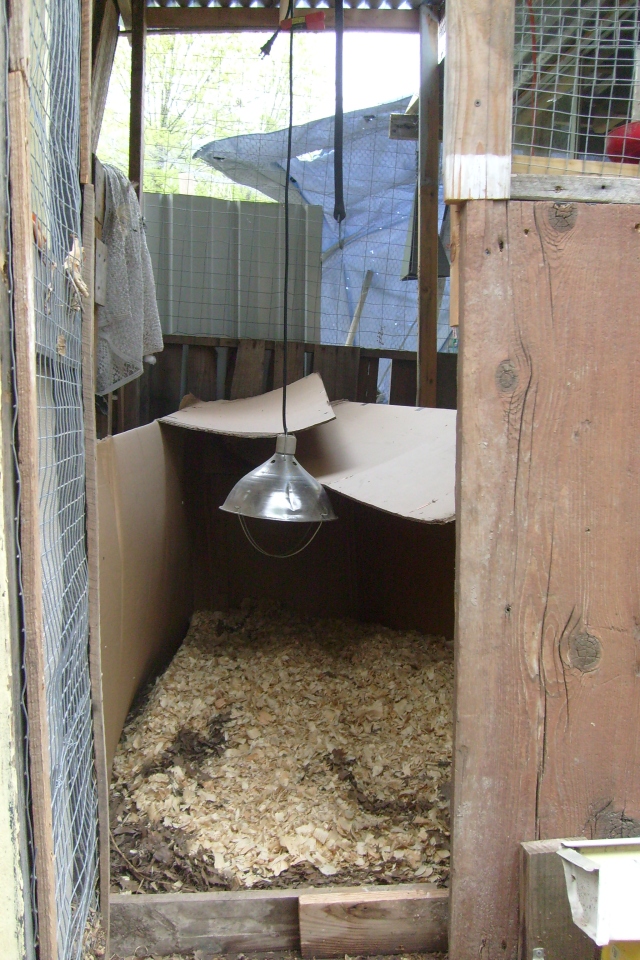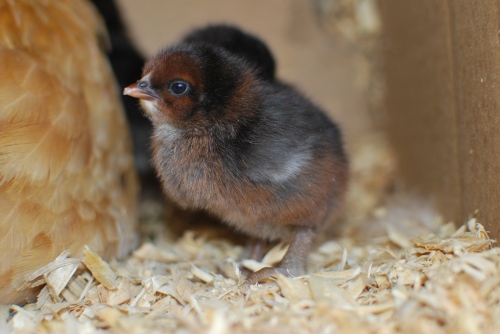I brought in some hatching eggs to incubate. I know, I know, I’m all about broody hens, but I’m in a pickle here. My old hens aren’t laying and all my attempts to bring in new chicks this spring for future layers failed.
I thought I’d do a little post about how the eggs were packaged. This is the 2nd time I’ve bought eggs from this supplier and the packaging was the same both times. Except this time I asked him to put my phone number on the outside of the box, because my particular route is really long and the mail carrier doesn’t arrive until late, sometimes even after 6 pm. Since it has been unseasonably cold I figured it would be better if the eggs didn’t sit in the truck all day.
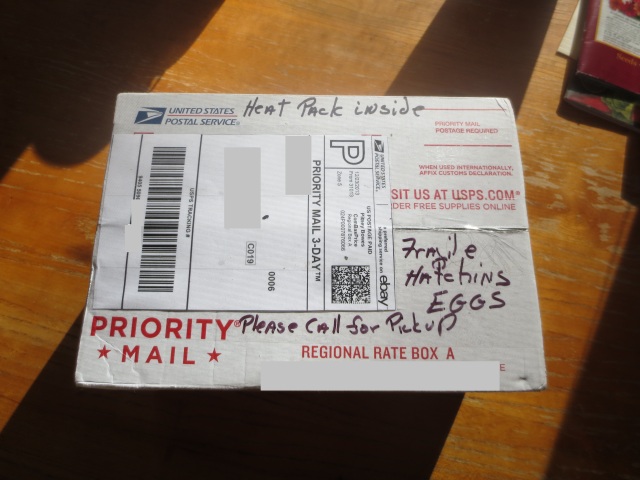
What the box looked like before I opened it, minus the contact information.

With the the flaps pulled back. That is the heat pack on top of the paper.

With the heat pack and invoice removed, there is a layer of newspaper type material to fill the box and act as a cushion between the heat and the eggs.

With the newsprint removed you can see the bubble wrap around the 3 sets of eggs.
That is one egg carton cut in half, each contains six eggs. A thirteenth egg is rolled up separately between the two halves. It is really well cushioned and also creates a cushion between the two halves.

Here the bubble wrap is pulled back to reveal the egg carton halves.
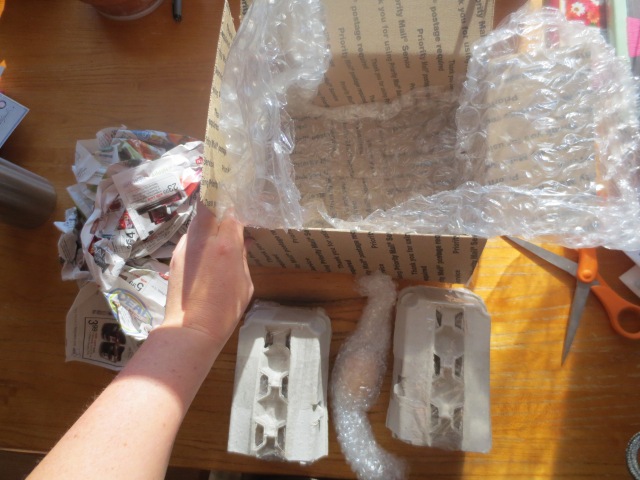
Everything is removed from the box to show the lower layer of bubble wrap.
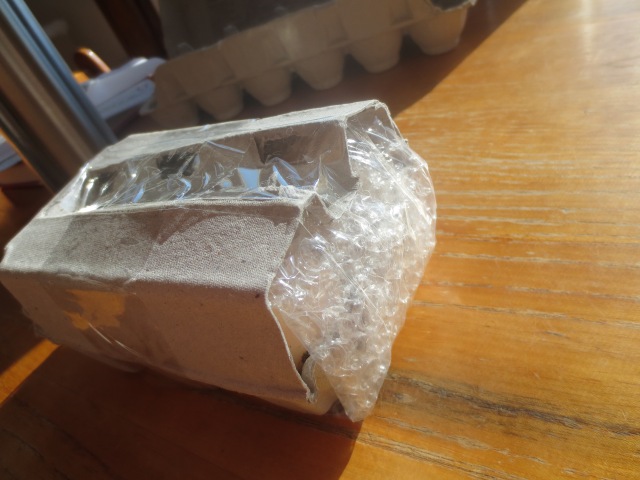
The bubble wrap is taped under the lid of the egg carton and wrapped over the split end and under.

Bottom of the same carton.

With the tape and lid removed.

Unrolled.
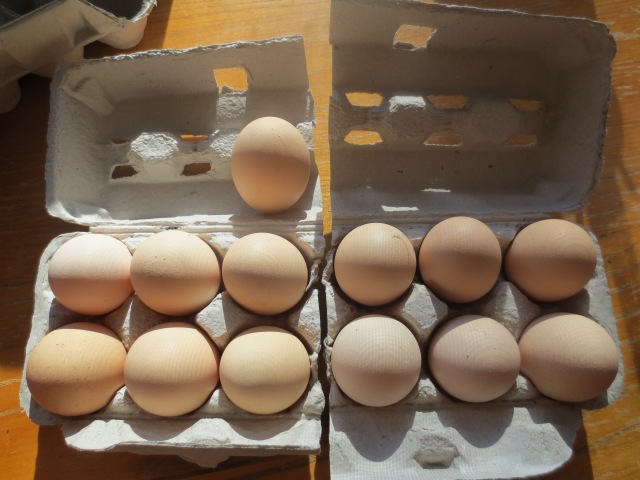
All of them!
One of the eggs on the carton end, not the cut end that had bubble wrap, was cracked. Since I ordered 12 and received 12 intact eggs this seller will get a positive review. Delivery companies always seem to crack at least one, but all good sellers pack extra eggs.

Cracked from shipping.
I’ve heard, but have no experience with it, that sometimes a cracked egg can be sealed with wax. So that is what I did to this one, #5, and to #1 as well because I dropped it while loading it into the bator.
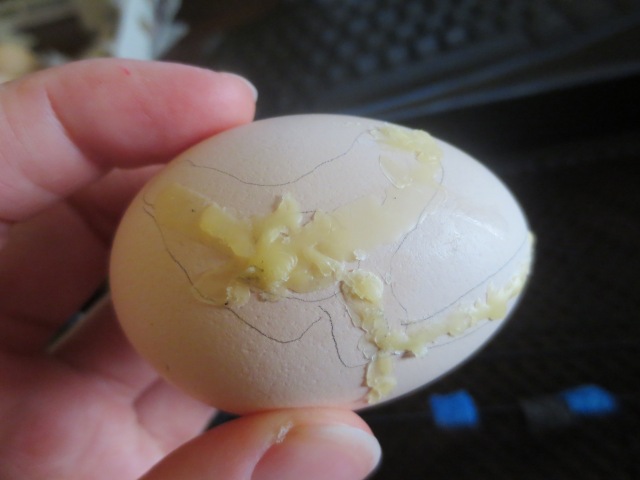
All waxed up, but I doubt it will hatch. It might develop.
As I said, I bought eggs from this farm before and they were fine, but five (#1, 2, 3, 4, & 8) of these eggs were dirty. I used a pencil to number each egg as well as to mark the dirty areas. Then I scraped off what I could. I have my doubts that this set of eggs will result in many live chicks.

Feces smeared across the surface could result in bacteria entering the egg and killing the embryo at some point during incubation.
The anecdotal guideline, for clean eggs, is that shipped eggs have a 50% hatch rate due to all the shaking up and temp changes. 50% of those will be male. I’m hoping for 2-3 female chicks out of this batch. They are Rhode Island Red roosters over Barred Rock hens.
















